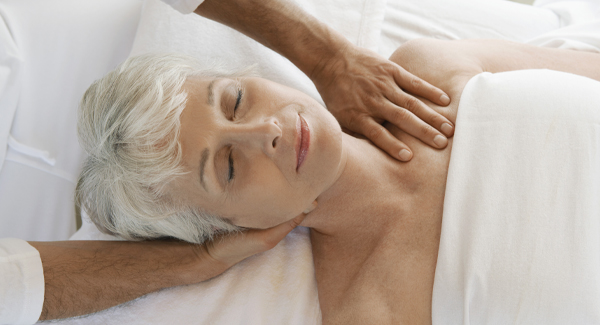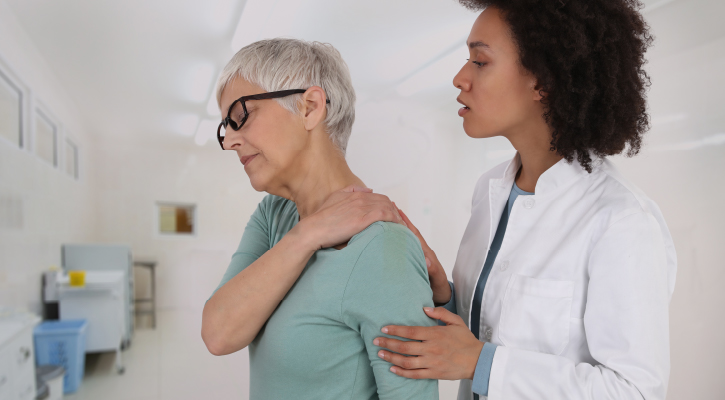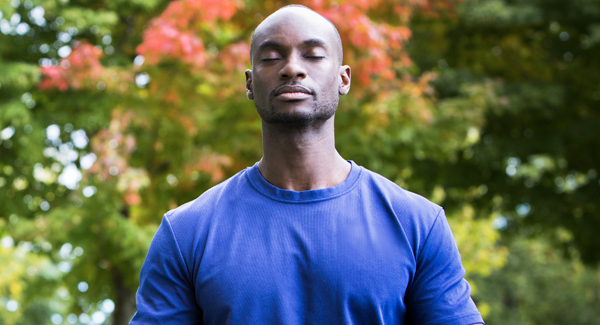Types of Massage
There are many different massage techniques to choose from. Find out which type of massage is best for you.
By Susan Bernstein, Mary Anne Dunkin and Adrienne Foley
Massage is an umbrella term covering many different techniques and healing philosophies. In general, massage is manipulation of the body’s skin, muscles and connective tissues, usually with the hands, but also with mechanical tools applied to the body’s surface. Massage therapy can be relaxing and soothing, or rough and intense, depending on the type of massage involved.
When choosing a type of massage for arthritis, moderate pressure is key, because it stimulates pressure receptors under the skin that convey signals to the brain that alleviate pain and stress-reducing neurochemicals like serotonin, says Tiffany Field, PhD, a research psychologist at the University of Miami Medical School. Any type of full-body massage therapy that involves moderate pressure, including self-massage, should help relieve arthritis pain and ease tension, she says.
Main Types of Massage
Before getting any type of massage, consult your doctor to make sure massage is safe for your arthritis and any other health conditions you may have. And be sure to tell your massage therapist that you have arthritis, and point out particular joints that are affected, prior to your session.
Swedish Massage. Swedish massage is the most common type of massage, and what many people think of when they hear the term “massage.” Swedish massage involves long, fluid stroking of muscles and tissues, and is meant to reduce soreness and stiffness in muscles and joints, to reduce anxiety and to improve circulation. Therapists may adjust pressure according to your sensitivity and typically use oil or lotion.
Deep Tissue Massage. Deep tissue massage focuses on manipulation of both top and deeper layers of muscles and tissues, often requiring intense, focused pressure by the therapist. Deep tissue massage is designed to address severe tension or pain in the muscles and connective tissues. Deep tissue massage may cause lingering soreness, so it might be inappropriate for some people with arthritis.
Hot Stone Massage. Offered in many day spas, hot stone massage involves placing smooth, heated stones on your back as you lie on your stomach. The hot stones send soothing heat to the muscles and tissues, releasing tension and promoting relaxation. Other forms involve cold stones, which may help sore muscles from exercise-related injuries or swelling. Some therapists may use both hot and cold stones for contrast or for different healing purposes.
Myofascial Release. Myofascial release aims to relieve pain by manipulating the fascia, connective tissues that surround muscles, blood vessels and nerves. During myofascial release, a therapist stretches and releases those connective tissues by gently rolling the skin back and forth on the back, legs and other areas of the body. Usually, no oils, lotions or massage tools are used.
Rolfing. Rolfing is similar to myofascial release, and is part of a healing philosophy called structural integration. Rolfing involves moving the body into certain positions and manipulating fascia tissues. Rolfing aims not only to promote pain relief and relaxation, but to restore posture and range of motion.
Shiatsu. Shiatsu is a Japanese massage technique widely performed in the United States. Shiatsu therapists apply pressure to specific points of the body using the fingers and palms in continuous, rhythmic motions. Like other Asian massage and healing philosophies, shiatsu is thought to restore the flow of qi, or healthy energy, in the body. No oils are used and usually you remain totally clothed during shiatsu.
Trigger Point Massage. Trigger point massage is designed to relieve pain in particular areas of the body by applying pressure or vibration into myofascial trigger points. Trigger point therapy that includes injections into the trigger points should only be performed in a clinical setting, such as a doctor’s office, or physical therapy or chiropractic office. Trigger points are points in the muscles where knots may form, and the pinpointed pressure is designed to relax those knots and ease pain.
Self-Massage. When your time or budget doesn’t allow for a professional massage, sometimes you have to take matters into your own hands. Self-massage is a great way to target painful areas and provide immediate relief, when and where you need it most.
Self-massage is kneading your own sore joints, pressure points or muscles using your hands, knuckles, elbows or massage tools. Massage tools may be mechanized to offer heat or vibration, or you can create your own aids with household objects like tennis balls or a rolling pin, says Field. Massaging hard-to-reach areas like your back may be difficult, but self-massage works well for sore feet, knees, calves, hands, neck or arms.
“Practicing self-massage on a regular basis will improve your overall comfort and increase the range of motion in arthritic joints,” says Bob McAtee, massage therapist and owner of Pro-Active Massage Therapy in Colorado Springs.
If you’d like to try your hand at self-massage, McAtee recommends starting with large, vigorous strokes to help warm up and prepare the muscles, then smaller precise strokes to target specific areas. Applying oil or lotion to the skin makes sliding or gliding strokes easier to perform and applying heat prior to self-massage can help the muscles relax and feel better as you work them.
Even if you regularly receive professional massage therapy, self-massage between those sessions will help extend the benefits of your massage, he says.
Massage is an umbrella term covering many different techniques and healing philosophies. In general, massage is manipulation of the body’s skin, muscles and connective tissues, usually with the hands, but also with mechanical tools applied to the body’s surface. Massage therapy can be relaxing and soothing, or rough and intense, depending on the type of massage involved.
When choosing a type of massage for arthritis, moderate pressure is key, because it stimulates pressure receptors under the skin that convey signals to the brain that alleviate pain and stress-reducing neurochemicals like serotonin, says Tiffany Field, PhD, a research psychologist at the University of Miami Medical School. Any type of full-body massage therapy that involves moderate pressure, including self-massage, should help relieve arthritis pain and ease tension, she says.
Main Types of Massage
Before getting any type of massage, consult your doctor to make sure massage is safe for your arthritis and any other health conditions you may have. And be sure to tell your massage therapist that you have arthritis, and point out particular joints that are affected, prior to your session.
Swedish Massage. Swedish massage is the most common type of massage, and what many people think of when they hear the term “massage.” Swedish massage involves long, fluid stroking of muscles and tissues, and is meant to reduce soreness and stiffness in muscles and joints, to reduce anxiety and to improve circulation. Therapists may adjust pressure according to your sensitivity and typically use oil or lotion.
Deep Tissue Massage. Deep tissue massage focuses on manipulation of both top and deeper layers of muscles and tissues, often requiring intense, focused pressure by the therapist. Deep tissue massage is designed to address severe tension or pain in the muscles and connective tissues. Deep tissue massage may cause lingering soreness, so it might be inappropriate for some people with arthritis.
Hot Stone Massage. Offered in many day spas, hot stone massage involves placing smooth, heated stones on your back as you lie on your stomach. The hot stones send soothing heat to the muscles and tissues, releasing tension and promoting relaxation. Other forms involve cold stones, which may help sore muscles from exercise-related injuries or swelling. Some therapists may use both hot and cold stones for contrast or for different healing purposes.
Myofascial Release. Myofascial release aims to relieve pain by manipulating the fascia, connective tissues that surround muscles, blood vessels and nerves. During myofascial release, a therapist stretches and releases those connective tissues by gently rolling the skin back and forth on the back, legs and other areas of the body. Usually, no oils, lotions or massage tools are used.
Rolfing. Rolfing is similar to myofascial release, and is part of a healing philosophy called structural integration. Rolfing involves moving the body into certain positions and manipulating fascia tissues. Rolfing aims not only to promote pain relief and relaxation, but to restore posture and range of motion.
Shiatsu. Shiatsu is a Japanese massage technique widely performed in the United States. Shiatsu therapists apply pressure to specific points of the body using the fingers and palms in continuous, rhythmic motions. Like other Asian massage and healing philosophies, shiatsu is thought to restore the flow of qi, or healthy energy, in the body. No oils are used and usually you remain totally clothed during shiatsu.
Trigger Point Massage. Trigger point massage is designed to relieve pain in particular areas of the body by applying pressure or vibration into myofascial trigger points. Trigger point therapy that includes injections into the trigger points should only be performed in a clinical setting, such as a doctor’s office, or physical therapy or chiropractic office. Trigger points are points in the muscles where knots may form, and the pinpointed pressure is designed to relax those knots and ease pain.
Self-Massage. When your time or budget doesn’t allow for a professional massage, sometimes you have to take matters into your own hands. Self-massage is a great way to target painful areas and provide immediate relief, when and where you need it most.
Self-massage is kneading your own sore joints, pressure points or muscles using your hands, knuckles, elbows or massage tools. Massage tools may be mechanized to offer heat or vibration, or you can create your own aids with household objects like tennis balls or a rolling pin, says Field. Massaging hard-to-reach areas like your back may be difficult, but self-massage works well for sore feet, knees, calves, hands, neck or arms.
“Practicing self-massage on a regular basis will improve your overall comfort and increase the range of motion in arthritic joints,” says Bob McAtee, massage therapist and owner of Pro-Active Massage Therapy in Colorado Springs.
If you’d like to try your hand at self-massage, McAtee recommends starting with large, vigorous strokes to help warm up and prepare the muscles, then smaller precise strokes to target specific areas. Applying oil or lotion to the skin makes sliding or gliding strokes easier to perform and applying heat prior to self-massage can help the muscles relax and feel better as you work them.
Even if you regularly receive professional massage therapy, self-massage between those sessions will help extend the benefits of your massage, he says.

Stay in the Know. Live in the Yes.
Get involved with the arthritis community. Tell us a little about yourself and, based on your interests, you’ll receive emails packed with the latest information and resources to live your best life and connect with others.



